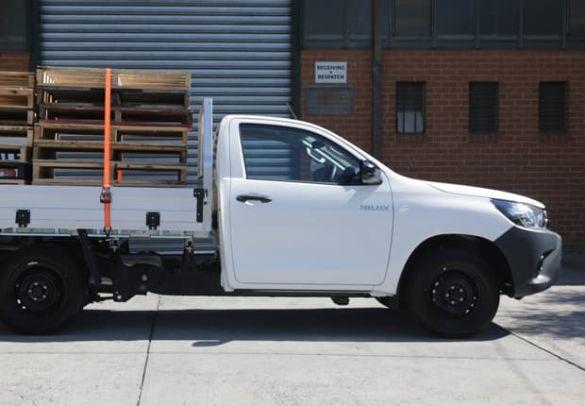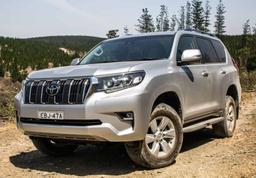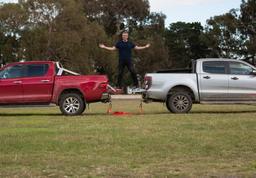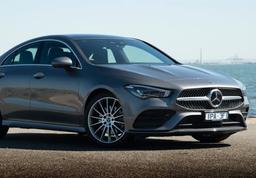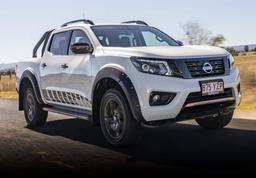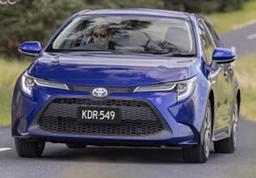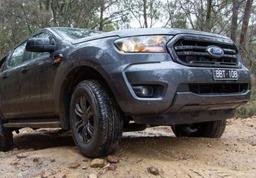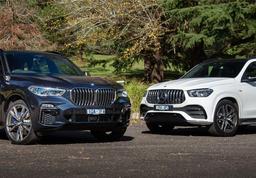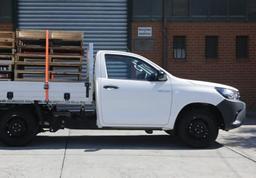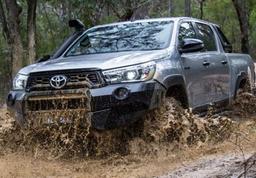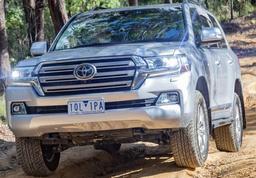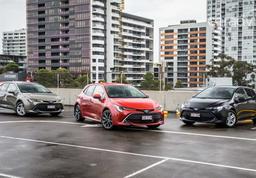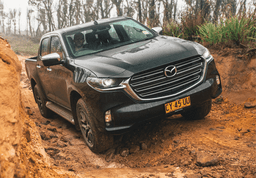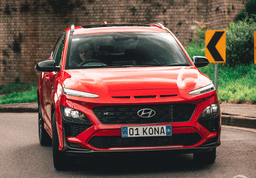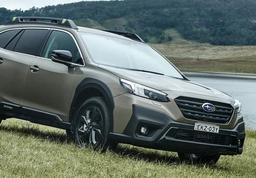The ute that keeps councils, couriers and rental fleets running leads the 4x2 sales race with good reason.
You’re looking at the reason the Toyota HiLux is Australia’s most popular vehicle. Not because of flash 4x4 models like the Rugged X and SR5, but because of humble base models like this 2020 Toyota HiLux Workmate 4x2 single-cab.
Okay, that’s a little ambitious, sure, but in the 4x4 ute class the HiLux runs second to the Ford Ranger, just (21 per cent market share YTD in 2020 against 23 per cent). However, in 4x2 ute sales the HiLux owns nearly 35 per cent of the market and 2WD versions of the Isuzu D-Max, Mitsubishi Triton, Mazda BT-50 and Nissan Navara all outsell the Ranger 4x2.
The line-up of each is wildly different, however, and that’s where Toyota runs away. See, there’s no petrol version of the D-Max, BT-50, Navara or Ranger, no low-ride auto D-Max, no petrol auto Triton, no base engine/auto combo for the BT-50… Each range has its own quirks and exclusions.
Toyota’s massive presence in the market means it is able to offer more choice and cover more segments, and it does just that with this very fleet-friendly model. The HiLux Workmate has always been an affordable option in the range, priced from an enticing $23,865 plus on-road costs (or just over $29K on the road).
On price that’s a world away from something like the $19,990 drive-away Great Wall Steed single-cab, though that ute comes with a diesel engine and manual transmission – not directly comparable, but useful as a value yardstick. Other competitors sit much closer on price.
That buy-in lands you a 2.7-litre petrol engine good for 122kW at 5200rpm and 245Nm at 4000rpm with a six-speed automatic transmission, meaning no-one on staff will be able to dodge driving this one with the ‘can’t drive a manual’ excuse.
If your company’s current work hack has been doing the hard yards for a while, the equipment list in the new one may come as a pleasant surprise. No, it’s not brimming with high-end tech, but there’s a still solid list of standard features (only a few of which you’ll find in the Steed, for instance).
Inside the cabin there’s a 4.2-inch colour driver's display, power windows with auto up/down for the driver, manual air-conditioning, cloth seat trim, power-adjustable mirrors, a tilt-adjustable steering wheel, and a 6.1-inch touchscreen with CD player, AM/FM radio, Bluetooth connectivity and two-speaker audio.
There’s also hard-wearing vinyl covering the floor, sturdy plastics across the dash and doors, a long-lasting urethane steering wheel rim and, maybe a little surprisingly, a carpeted rear bulkhead to help absorb some of the noise that would otherwise creep into the cabin.
The biggest forward step is the HiLux’s safety kit. From mid 2019, all HiLux models were upgraded to include Toyota Safety Sense – a package including adaptive cruise control, road sign recognition, lane-departure warning, and autonomous emergency braking with pedestrian detection and daytime cyclist detection.
The one stand-out missing feature is a reverse camera. It’s included on pick-up body models, but not cab-chassis versions. Given there’s a display in the cabin, retrofitting an accessory camera shouldn't be a big deal if you’d like one.
The HiLux range wears a five-star ANCAP safety rating, revised in 2019 in line with the added safety tech. Fleets are important to Toyota, and five-star safety is a must for some operators, explaining why even the base grade has such a comprehensive list of features.
Again, this is where Toyota sneaks ahead of its competitors. Isuzu, Nissan and Mazda don’t offer advanced safety tech on any version of their utes. Mitsubishi does, just not on single-cab versions, and the Ford Ranger requires you to spend a lot more for a base-model 2WD in the first place, but you do get active safety into the mix.
As for capability, payload is rated at 1.2 tonnes (before tray and accessories), towing at 2500kg maximum. Obviously, as a cab-chassis you can pick and choose your own rear body, but with the Toyota Genuine general purpose alloy tray shown here you get 1697mm width and 2400mm length (internal) and the basic package tips the scales at 126kg.
Ultimately, you won’t mistake the HiLux Workmate for any kind of near-premium or near-passenger-feeling product, but utes have come a long way in a short time.
This one is comfy to sit in. The basic front seats don’t have a heap of adjustment parameters, but they slide and tilt far enough to be comfy for bodies of most shapes and sizes. The fixed headrest shouldn’t be in your way, and the fixed-height seat strikes a decent middle-ground for all but the very tall.
Flasher versions of the HiLux get a reach-adjustable steering wheel, whereas this one is height only, plus there are more of the visible blanks in the dash filled in and more scope for seat adjustment, but honestly there’s little to gripe about inside the Workmate.
Oh, bench seat? Nope, sorry, that configuration has long been consigned to history. The single-cab is for work teams of two only these days.
It’s a tidy thing to drive. The automatic won’t win any awards for shift speed (nor does it need to), but the control logic is sound, it’ll kick down obediently when you squeeze the throttle, and works well with the engine.
Obviously, without the low-end torque of a diesel, the petrol Hilux feels a little short at lower revs, but has a decent mid-range punch. Again, you’re not getting passenger car levels of comfort or noise suppression, but it has to be said, the Workmate really isn’t too far off.
Steering is light and easy, though you’ll need to conduct a lot of wheel twirling to get the front wheels from lock-to-lock. Because the rear can be jittery when unladen, the slow steering is handy, as it means more control and no abrupt surprises with an unladen rear.
Speaking of the rear, a flat tray means that unlike a style-side ute there’s no interruption to the loadable surface. You can’t fit a pallet in most dual-cabs, but you can fit one on the back of the single-cab – well, two actually. One behind the other as shown.
The payload shown here is close to 300kg, so a long way off what the HiLux can theoretically carry. The ride becomes more settled, though it’s still very much on the stiff side, and easily able to handle even more weight over the rear axle.
Toyota claims a 10.9 litres per 100km fuel-use figure. In an attempt to mimic courier and delivery driver behaviour we kept things urban, loaded, and idled the engine between stops (in this case for photos, but in yours more likely to make a drop) and came back with a 13.9L/100km figure from a brand-spanking-new engine still being run in.
Obviously, every use case is different. Run more freeway miles and the figure will drop. Add more weight and it may rise. But the indication is encouraging nonetheless.
On the ownership front, private buyers are covered by Toyota’s five-year warranty with no kilometre cap (covering genuine accessories, too) and a seven-year engine and driveline warranty provided scheduled maintenance requirements are met. Commercial-use vehicles, think hire or goods transport, are capped at five years or 160,000km.
Servicing is covered under Toyota’s capped-price program, but intervals are short. You’ll need to head back every six months or 10,000km, meaning more days (or at least part thereof) with the car off the road, but the $190 per visit for the first six visits is easy to manage. However, the $250 70,000km, $720 80,000km, $343 90,000km, and $439 100,000km services (or up to five years) might take some additional budgeting.
Ultimately, the Toyota HiLux Workmate wins whatever prize is on offer in the 4x2 work ute segment. It oozes fleet appeal: relatively cheap to buy, cost-effective to maintain, and with solid resale value.
The right configuration and safety tech are crucial parts of that appeal, too. Meanwhile, owner-operators aren’t ignored with enough built-in comfort and refinement to make the Workmate a valued member of any workforce, big or small.
While it may lead ute sales overall, it's rare that the HiLux tops its class. It's a good ute, but falls into the 'jack-of-all-trades, master of none' trap all too often. The Workmate, when lined up against its 4x2 competitors, shows some clear advantages and it's not hard to see why it's a fleet favourite.
This article has been republished with approval from its original source and author at caradvice.com.au.
Let us help you upgrade and get driving sooner
Ready to trade in your current 4x4 and upgrade to something new? Either way, we're here to help.
We’ve redefined the car buying process to make it simple, stress and haggle free. We'll find you a great deal from our Australia wide dealer network to ensure you get a competitive price.
Call 1300 880 008 to chat with us and learn more about what we can do for you or get the new car buying process started today.

